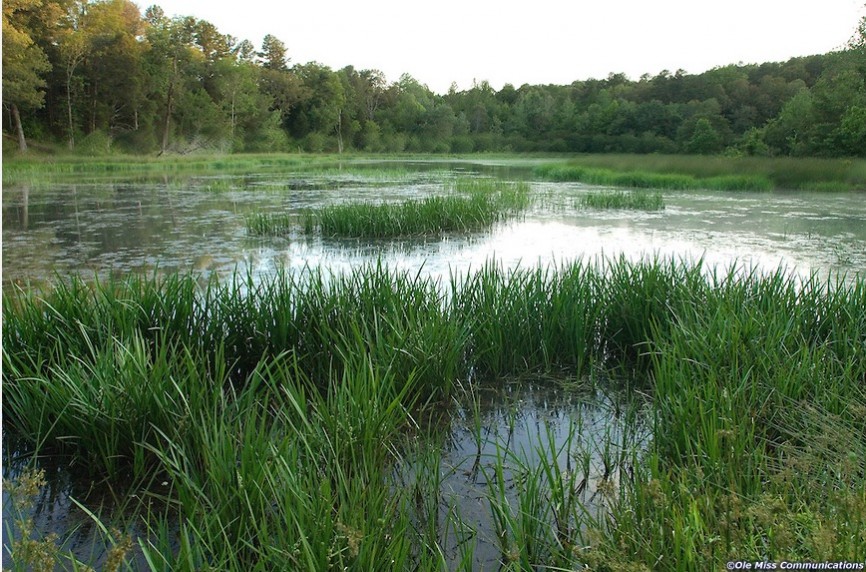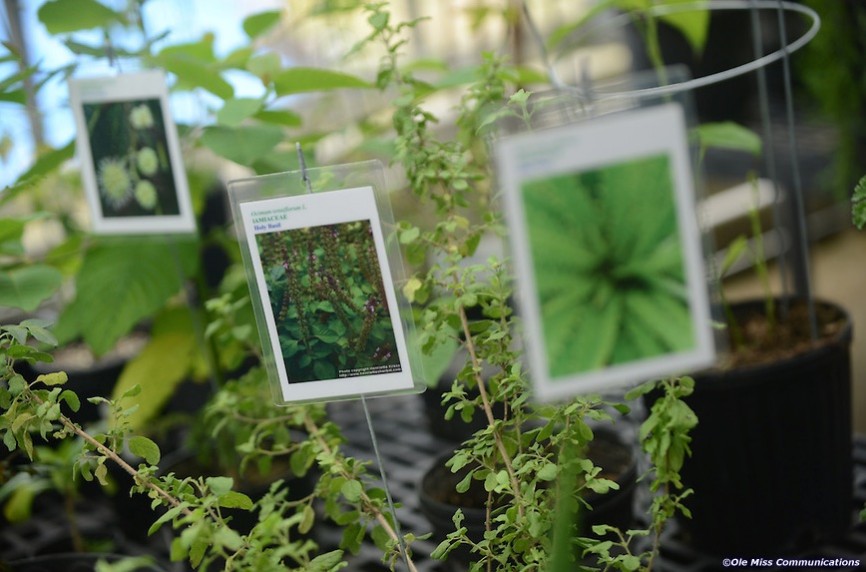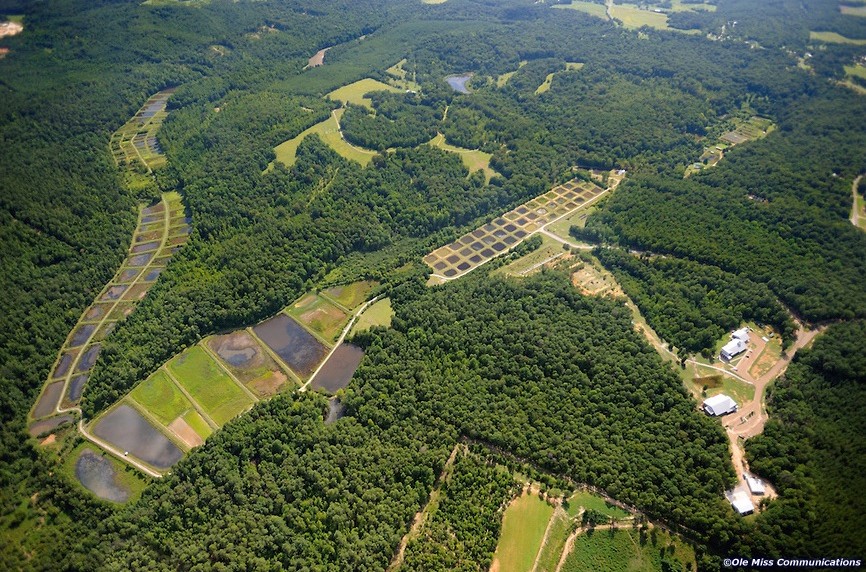Agribusiness
Overview
Agriculture and Forestry is Mississippi’s number one industry. In order to support this leading industry, the University of Mississippi conducts unique and targeted research and development in the areas of natural products (pharmaceuticals, dietary supplements, and agrochemicals) and agricultural soils. With an diverse array of facilities such as the Biological Field Station and the National Center for Natural Products Research, UM is uniquely positioned to impact this vital Mississippi industry.
Discovery and Development of Natural Products for Mississippi Farmers:
The National Center for Natural Products Research discovers and develops natural products for use as pharmaceuticals, dietary supplements, and agrochemicals. Research focuses on the biological and chemical properties of medicinal plants as potential crops for Mississippi farmers. NCNPR facilities include production greenhouses, demonstration garden beds, shade houses, field plots, and biomass processing facilities. The USDA Agricultural Research Service Natural Products Utilization Research Unit is co-located with NCNPR in the Cochran Center on the University of Mississippi Oxford campus.
Applying Acoustics R&D to Address Agriculture-related Needs:
The National Center for Physical Acoustics (NCPA) specializes in basic and applied research in the area of physical acoustics. NCPA expertise is applied in the use of acoustics to non-destructively determine the structural health of earthen levees and dams, measure the sediment payload carried by rivers and streams, accurately count fish stock in real time, determine soil erodibility, and remotely measure the subsurface profile of agricultural soils. The porous media group is focused on acoustic/laser imaging and detection as well as agriculture-related projects for the USDA. Additional research is addressing areas specifically important to the state of Mississippi, such as catfish health, termite and fire ant infestations, and viability of flood control dams.
Increasing Scientific Understanding and Promoting Environmental Stewardship:
The UM Field Station is a modern teaching and research facility with state-of-the-art buildings and labs. Located on a 740-acre site, research covers a broad spectrum of disciplines, from the potential healing properties of plants to turkey behavior, fish growth and reproduction, controlling invasive insect species and mitigating pesticide run-off from farm fields. Research opportunities include wetlands, grasslands and closed-canopy forests. The forested stands are mixtures of shortleaf pine and oaks with loblolly pine, sweetgum, red maple, winged elm and black gum. Sandy seepage areas at the base of slopes support the highest plant diversity. Natural and constructed wetlands, including more than 200 experimental ponds ranging from 0.1 to 2 acres available for comparative studies, are fed by springs and small streams. An aviary for study of wild turkeys is located in a remote area. The numerous ponds provide opportunities for controlled experiments and large-scale projects.
Field Station Facilities:
- Two 200-square-foot and three 500-square-foot laboratories with hoods; suitable for studies utilizing chemicals
- 500-square-foot culturing laboratory
- 400-square-foot aquarium room and a computer lab
- 1,900-square-foot greenhouse


